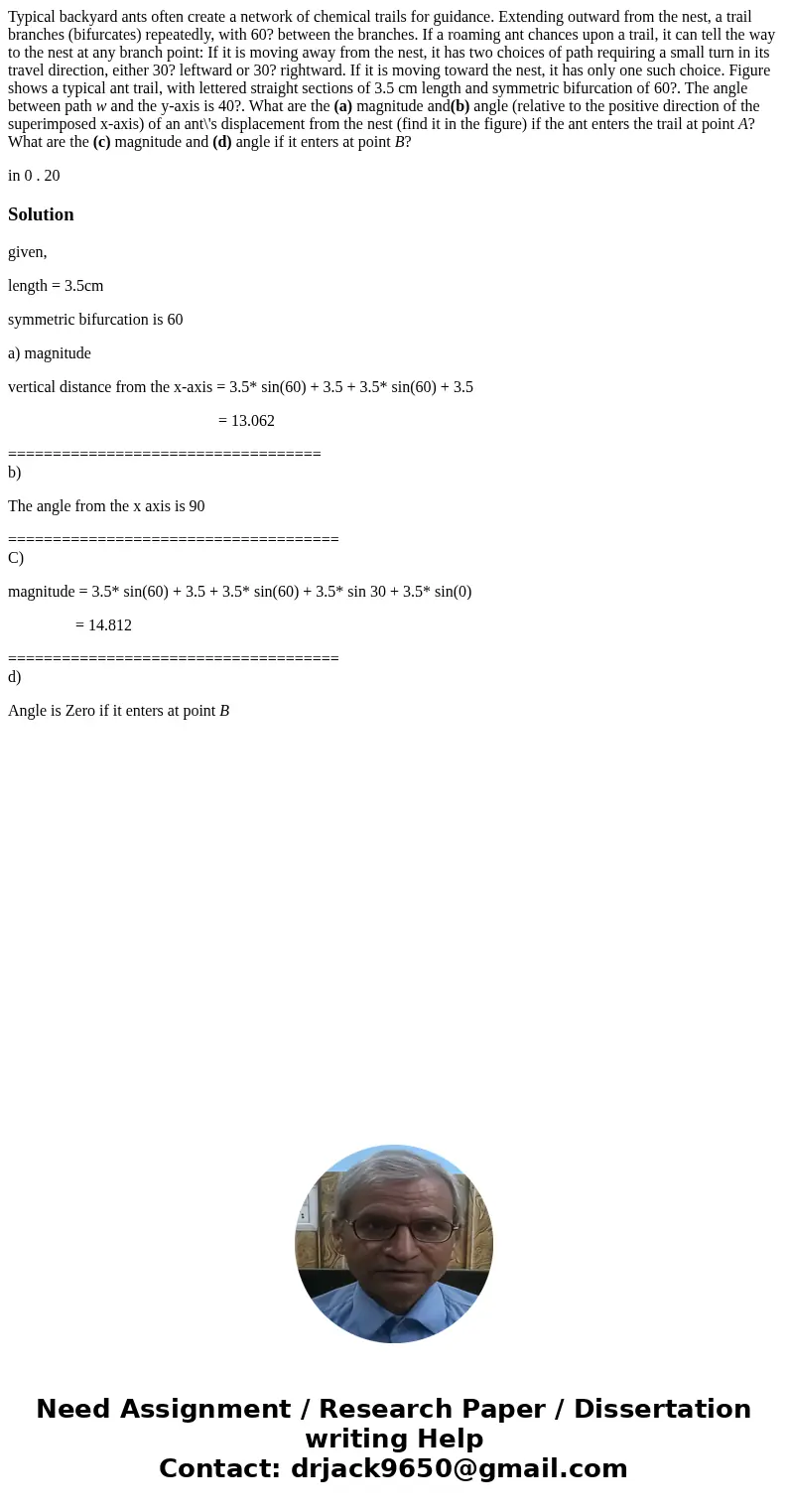Typical backyard ants often create a network of chemical tra
Typical backyard ants often create a network of chemical trails for guidance. Extending outward from the nest, a trail branches (bifurcates) repeatedly, with 60? between the branches. If a roaming ant chances upon a trail, it can tell the way to the nest at any branch point: If it is moving away from the nest, it has two choices of path requiring a small turn in its travel direction, either 30? leftward or 30? rightward. If it is moving toward the nest, it has only one such choice. Figure shows a typical ant trail, with lettered straight sections of 3.5 cm length and symmetric bifurcation of 60?. The angle between path w and the y-axis is 40?. What are the (a) magnitude and(b) angle (relative to the positive direction of the superimposed x-axis) of an ant\'s displacement from the nest (find it in the figure) if the ant enters the trail at point A? What are the (c) magnitude and (d) angle if it enters at point B?
in 0 . 20Solution
given,
length = 3.5cm
symmetric bifurcation is 60
a) magnitude
vertical distance from the x-axis = 3.5* sin(60) + 3.5 + 3.5* sin(60) + 3.5
= 13.062
===================================
b)
The angle from the x axis is 90
=====================================
C)
magnitude = 3.5* sin(60) + 3.5 + 3.5* sin(60) + 3.5* sin 30 + 3.5* sin(0)
= 14.812
=====================================
d)
Angle is Zero if it enters at point B

 Homework Sourse
Homework Sourse